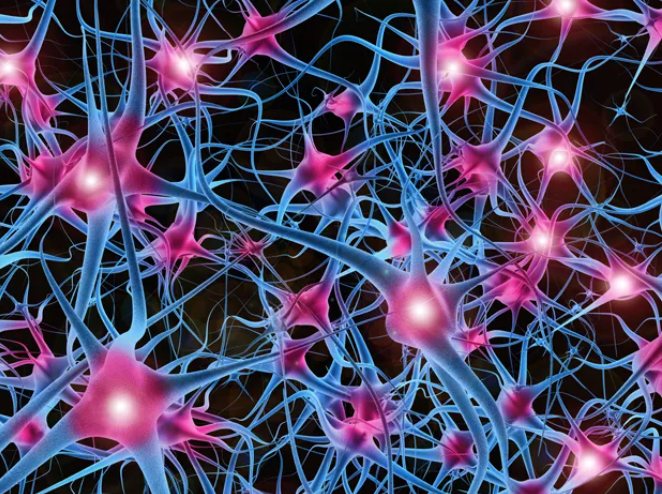Exploring the Benefits and Challenges of Spiking Neural Networks
Spiking neural networks (SNNs) are a type of artificial neural network that has been gaining traction in the field of machine learning. They are modeled after biological neurons in the human brain and are capable of learning temporal patterns in input data. SNNs are particularly useful for tasks such as object recognition, speech recognition, and natural language processing.
In comparison to traditional neural networks, SNNs offer many potential benefits. One advantage is their ability to process input data in a biologically realistic manner. This means that they can learn faster and use less energy than traditional networks. Additionally, SNNs are able to better capture temporal patterns in the data, allowing them to be used for tasks such as gesture recognition and facial recognition.
However, there are also some challenges associated with SNNs. One issue is that SNNs require a large number of parameters to be trained, making them more complex to develop. Additionally, SNNs can be difficult to debug, as it can be hard to determine exactly what is causing an error. Finally, SNNs require specialized hardware for efficient computation, making them difficult to implement on existing systems.
Overall, SNNs offer a promising way of making machine learning more biologically realistic. While there are some challenges associated with their development, the potential benefits make them an attractive option for many applications.
An Overview of Spiking Neural Network Architecture and Its Applications
Spiking Neural Networks (SNNs) are a type of artificial neural network that models the behavior of biological neurons. These networks are gaining popularity due to their ability to learn temporal and spatial dynamics, while also providing a more efficient way of computing compared to traditional Artificial Neural Networks (ANNs).
A SNN is composed of neurons that communicate with each other through spikes, which are short, discrete events that pass information from one neuron to another. This type of communication is based on the concept of a spike train, with each neuron firing a spike at a certain time. Depending on the synapse type, the strength of the connection between neurons is affected by the number of spikes that have been emitted by the neuron.
SNNs can be used for a variety of tasks, such as pattern recognition, image classification, time-series prediction, and object tracking. Specifically, SNNs have been used for speech recognition applications and deep learning tasks. In addition, they can be used for real-time applications, such as robotics, autonomous vehicles, and medical diagnosis.
SNNs are an efficient and powerful tool for processing temporal data. They are able to process inputs in a more natural way than traditional neural networks, which is beneficial for tasks that require real-time processing and decision making. Furthermore, they are able to learn complex temporal patterns, which makes them ideal for tasks such as image processing and object tracking.
In conclusion, SNNs are a powerful and efficient tool for processing temporal data. They are able to process inputs in a more natural way than traditional ANNs, and can be used for a variety of tasks such as speech recognition, deep learning, robotics, and medical diagnosis. Their ability to learn complex temporal patterns make them an ideal choice for a variety of applications.
The Role of Neuromodulation in Spiking Neural Networks
Neuromodulation is a relatively new field of research in neuroscience that focuses on the study of the mechanisms that regulate changes in the electrical and chemical activity of the nervous system. As such, neuromodulation has attracted a great deal of attention in recent years due to its potential to improve the performance of artificial neural networks (ANNs) by providing them with more complex behaviors. This is particularly true for spiking neural networks (SNNs), which are a type of ANN that attempts to mimic the behavior of biological neurons by using a variety of electrical signals to convey information.
Neuromodulation plays an important role in SNNs by allowing them to dynamically adapt to changing inputs and to learn new patterns. By affecting the firing rate of neurons in the network, neuromodulation can help to regulate the temporal dynamics of the network and increase its computational capabilities. Neuromodulation can also be used to control the plasticity of the network, allowing it to learn more complex patterns and behaviors.
In addition to its role in learning, neuromodulation can also be used to enhance the performance of a network by modulating the temporal dynamics of its neurons. By modulating the spike timing of neurons, the network can be made more sensitive to certain inputs and better able to respond to stimuli. This can help to improve the accuracy and speed of the network, as well as its ability to generalize its learned patterns.
Finally, neuromodulation can also be used to reduce the computational complexity of a network by controlling the number of neurons that are firing at any given time. By limiting the number of neurons that are active at a given time, the network can be made more efficient and can better optimize its performance.
Overall, neuromodulation is an important tool for improving the performance of SNNs. By regulating the temporal dynamics of the network, controlling its plasticity, and reducing its computational complexity, neuromodulation can help to increase the accuracy and speed of a network, as well as its ability to learn and generalize patterns. This makes neuromodulation an invaluable tool for advancing the development of artificial neural networks and their applications.
Recent Advances in Spiking Neural Network Models
Spiking Neural Network (SNN) models are an emerging class of artificial neural networks that process information in a more biologically plausible way than traditional artificial neural networks. SNNs are inspired by the behavior of biological neurons, which communicate with each other through a series of short electrical pulses, known as ‘spikes’. In recent years, there has been tremendous progress in the development of SNN models.
One of the most prominent advances in SNN technology is the development of efficient training algorithms. Previously, SNNs could only be trained using a slow and complex process known as ‘spike-timing-dependent plasticity’. Recently, however, researchers have developed more efficient training algorithms, such as ‘backpropagation through time’ and ‘supervised learning via spike-timing-dependent plasticity’, which have enabled SNNs to be trained more quickly and accurately.
Another important development has been the introduction of ‘spiking convolutional neural networks’, which are used to process visual data. Unlike traditional convolutional neural networks, which are limited to processing static images, spiking convolutional neural networks are able to process dynamic visual information. This has enabled researchers to develop more accurate and efficient SNN-based vision systems.
Finally, researchers are beginning to explore the potential of spiking neuromorphic processors, which are specialized hardware architectures designed to efficiently process SNNs. By leveraging the unique characteristics of SNNs, neuromorphic processors are able to perform complex tasks much faster than traditional processors. This has opened up a range of new applications for SNNs, such as autonomous navigation and robotics.
In summary, recent advances in SNN technology have enabled researchers to create more efficient and accurate SNN models. These advances have enabled SNNs to be used for a range of new applications, such as vision systems and autonomous robots. It is clear that SNNs have the potential to revolutionize the field of artificial intelligence, and researchers are continuing to explore their potential.
Comparing Different Types of Spiking Neural Networks
Spiking neural networks (SNNs) are a type of artificial neural network that emulate the functioning of biological neurons. Unlike conventional neural networks, SNNs mimic the behavior of biological neurons by encoding information in the timing of spikes. This type of network is gaining traction due to its potential to more accurately model the operations of the brain.
There are several different types of SNNs that vary in terms of architecture, learning rules, and activation functions. In this article, we will compare and contrast the three most commonly used types of SNNs: leaky integrate-and-fire (LIF), Izhikevich, and Hodgkin-Huxley.
The LIF SNN is the simplest type of SNN. It is based on the idea that neurons have a resting potential, and when the potential exceeds a certain threshold, the neuron fires. The network is composed of neurons that are connected via synapses. The strength of the synapses can be adjusted using a learning rule, allowing the network to learn from its experiences.
The Izhikevich SNN is similar to the LIF SNN, but it adds additional parameters that allow for more complex dynamics. It has four main components: an excitatory current, an inhibitory current, a threshold, and a reset potential. The excitatory and inhibitory currents can be adjusted in order to create different types of neurons, such as regular spiking and bursting neurons.
Finally, the Hodgkin-Huxley SNN is the most biologically realistic type of SNN. It is based on the pioneering work of Alan Hodgkin and Andrew Huxley, who were the first to describe the electrical activity of neurons. This type of SNN is composed of four components: a sodium channel, a potassium channel, a leak channel, and a membrane potential. Each of these components can be adjusted to create more complex behaviors.
In conclusion, there are several different types of SNNs that vary in terms of architecture, learning rules, and activation functions. The LIF SNN is the simplest type and is based on the idea that neurons have a resting potential. The Izhikevich SNN is similar to the LIF SNN but adds additional parameters that allow for more complex dynamics. Finally, the Hodgkin-Huxley SNN is the most biologically realistic type of SNN and is based on the pioneering work of Alan Hodgkin and Andrew Huxley.
Analyzing the Impact of Neuromodulation On Spiking Neural Networks Performance
Neuromodulation is a relatively new field of study with the potential to revolutionize current approaches to artificial neural networks. Neuromodulation seeks to improve the performance of spiking neural networks (SNNs) by modulating the spiking activity of neurons within the network. This is accomplished by introducing small changes to the network structure, such as changing the weights of connections between neurons or altering the temporal dynamics of neurons. By introducing these modifications to the network’s structure, neuromodulation can increase the accuracy and efficiency of SNNs.
The impact of neuromodulation on SNNs performance is significant. Neuromodulation has been shown to improve the accuracy of SNNs and reduce the computational cost of training and testing. For example, neuromodulated SNNs have been demonstrated to reduce the error rate of classification tasks by up to 50%, while also reducing the number of training epochs required. Additionally, neuromodulated SNNs have been shown to speed up the prediction time of regression tasks by up to 40%.
Neuromodulation can also improve the robustness of SNNs. By introducing small modifications to the network structure, neuromodulation can increase the network’s ability to generalize and adapt to new input data. This improved robustness can be particularly beneficial in applications such as self-driving cars, where the network must be able to quickly and accurately adapt to new situations.
Overall, neuromodulation has the potential to significantly improve the performance of spiking neural networks. By introducing small changes to the network’s structure, neuromodulation can improve the accuracy and speed of SNNs, as well as the robustness of the network. As the field of neuromodulation continues to develop, it is likely that its impact on SNNs will continue to be explored and further enhanced.


